Abstract
We report the first theoretical description for the time-dependent fluorescence anisotropy decay resulted from two-photon excitation (r[2](t)) for fluorophores in macroscopically isotropic and oriented membranes. In case of two-photon excitation, the initial value of the fluorescence anisotropy r[2](0) immediately after excitation by a flash of polarized light is a function of the components of the two-photon absorption transition tensor [unk]S and the projections of the emission transition moment to the principal axes of [unk]S. The components of [unk]S depend on the symmetries of all molecular states relevant to the two-photon absorption process. The maximal value of r[2](0) is proven to be as large as 0.61 in contrast to 0.4 for the conventional one-photon induced fluorescence anisotropy r[1](0). It is shown that only for some special cases the ratio of the two-photon r[2](t) over the conventional one-photon r[1](t) will be a constant at all times for fluorophores in macroscopically isotropic membrane systems. In oriented membrane systems, an additional order parameter <P6> can be determined by the use of angle-resolved fluorescence depolarization measurements resulted from two-photon excitation. The advantages of measuring time-resolved fluorescence anisotropy decays or angle-resolved fluorescence depolarization ratios by two-photon excitation for the study of orientational dynamics in isotropic or oriented membranes are discussed from the theoretical point of view.
Full text
PDF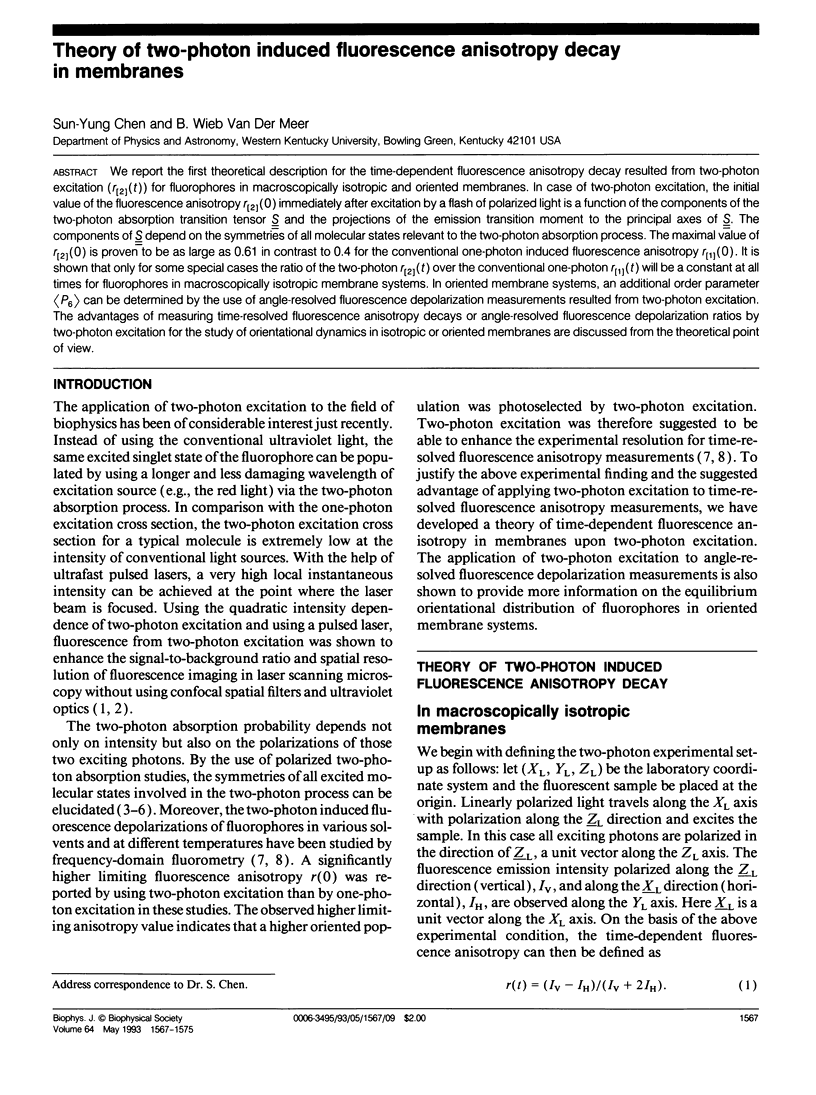
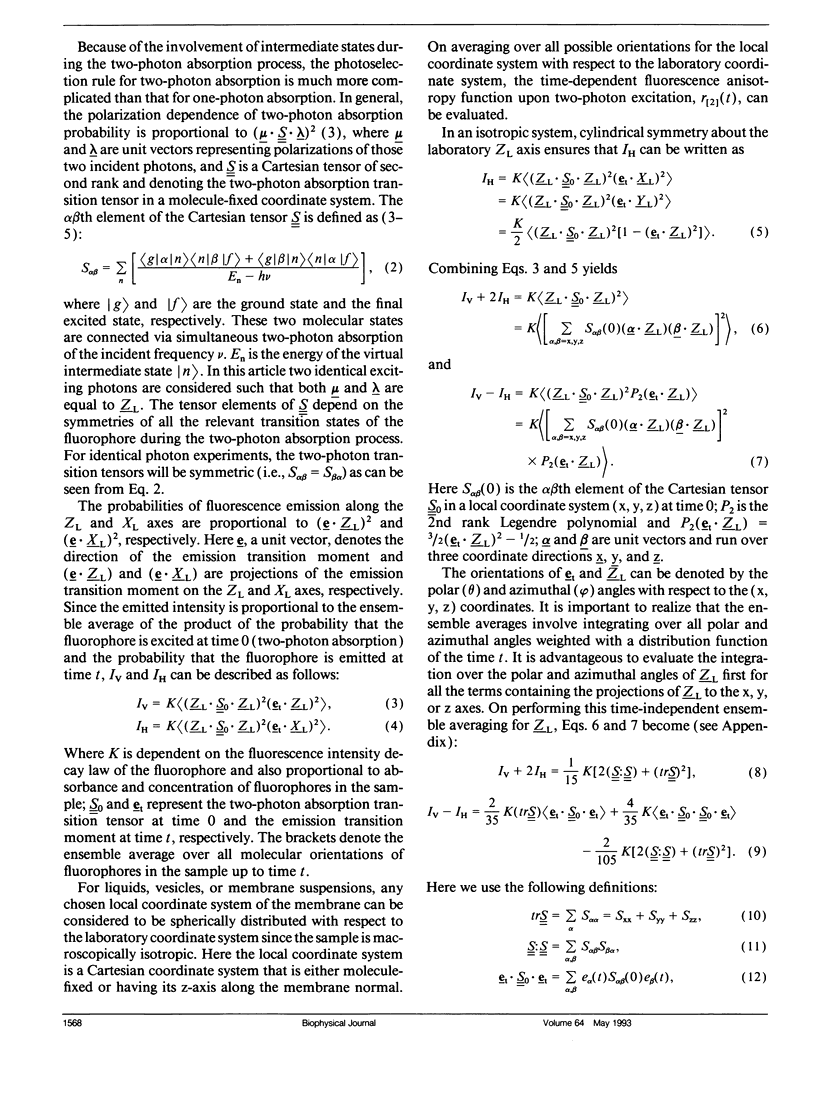

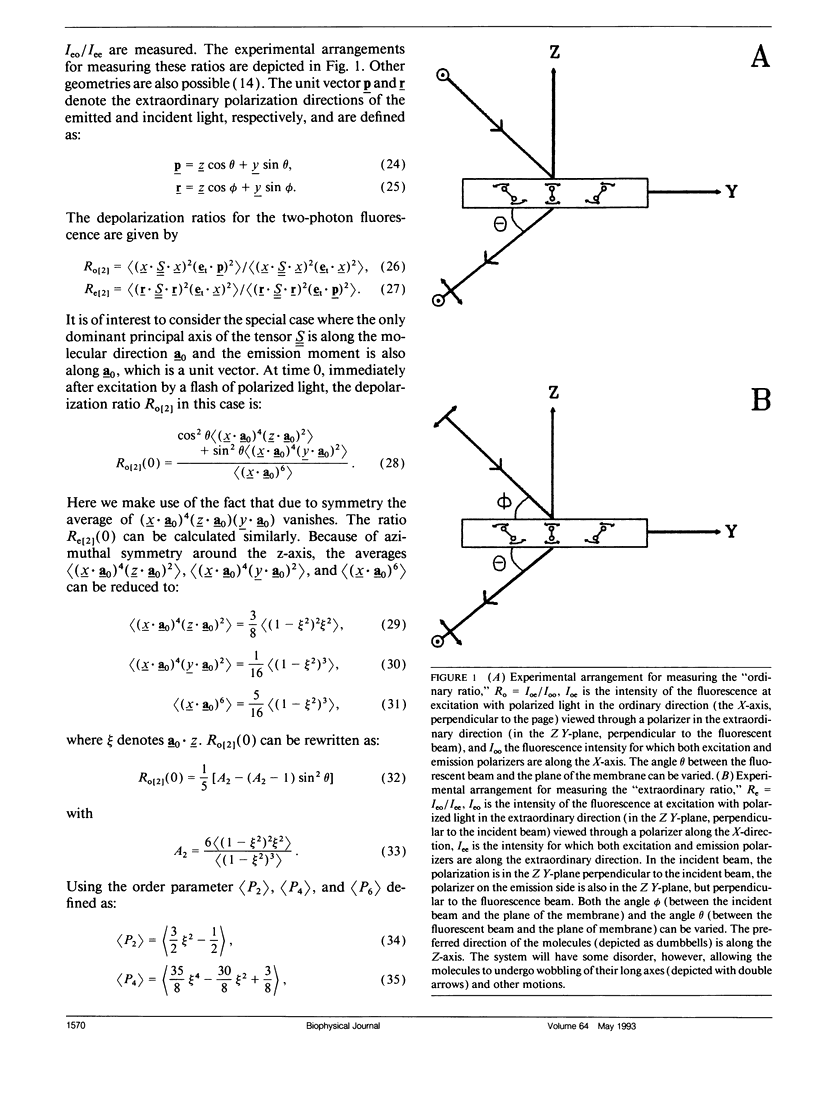

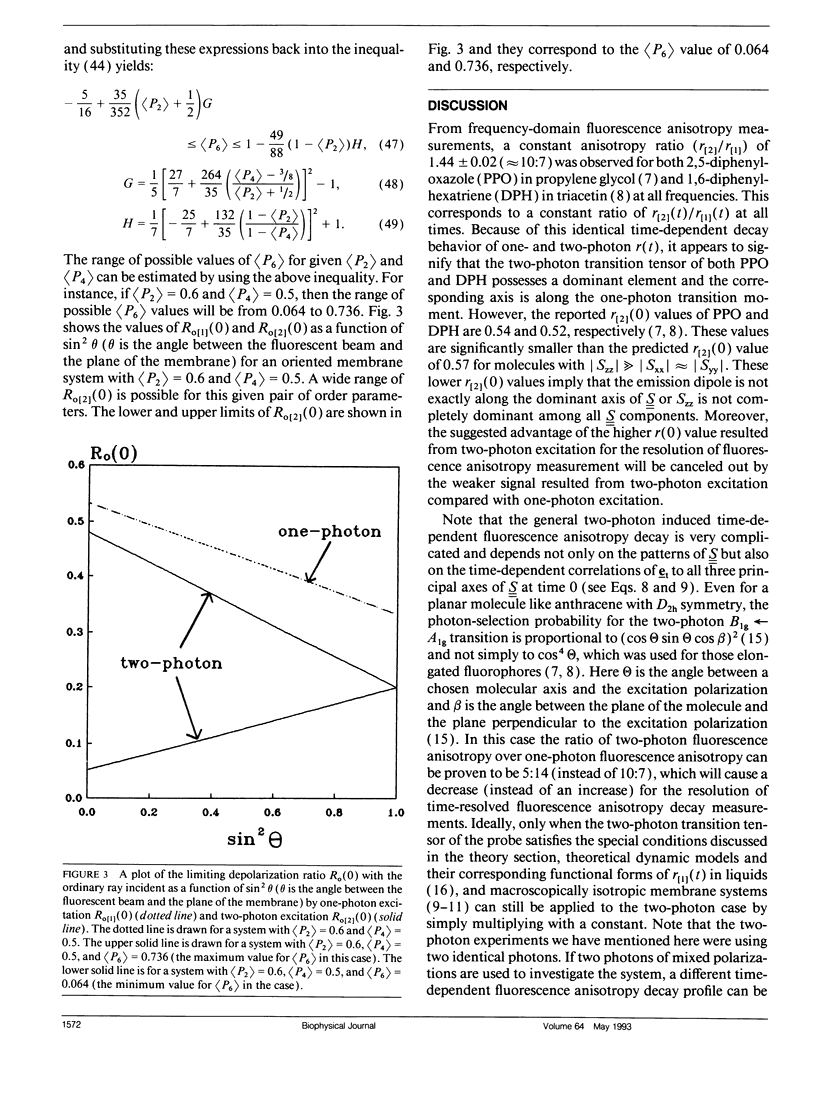
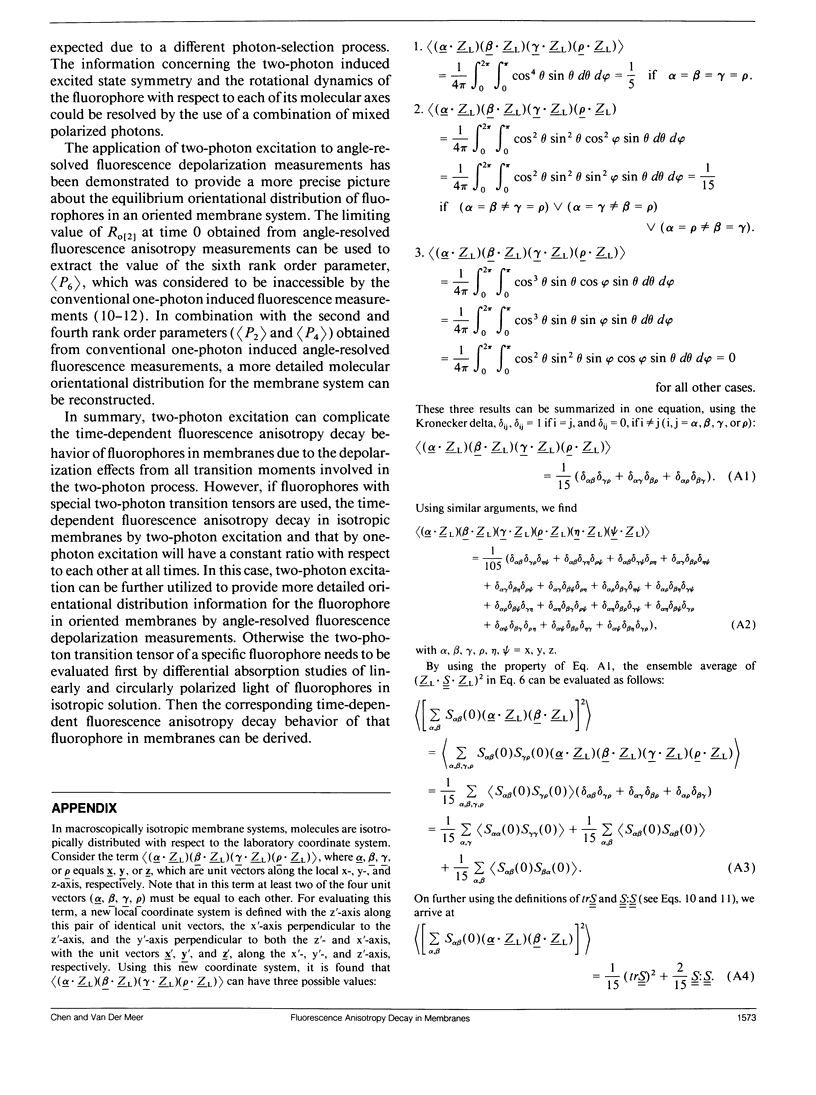
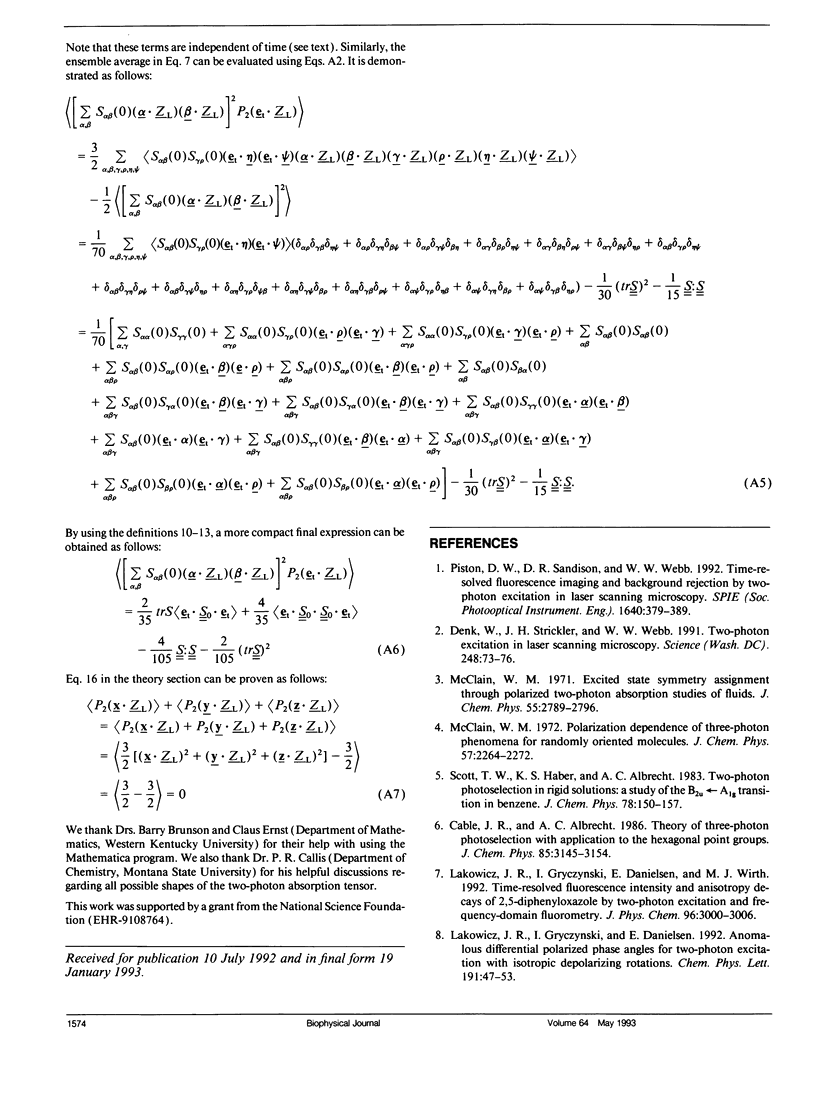
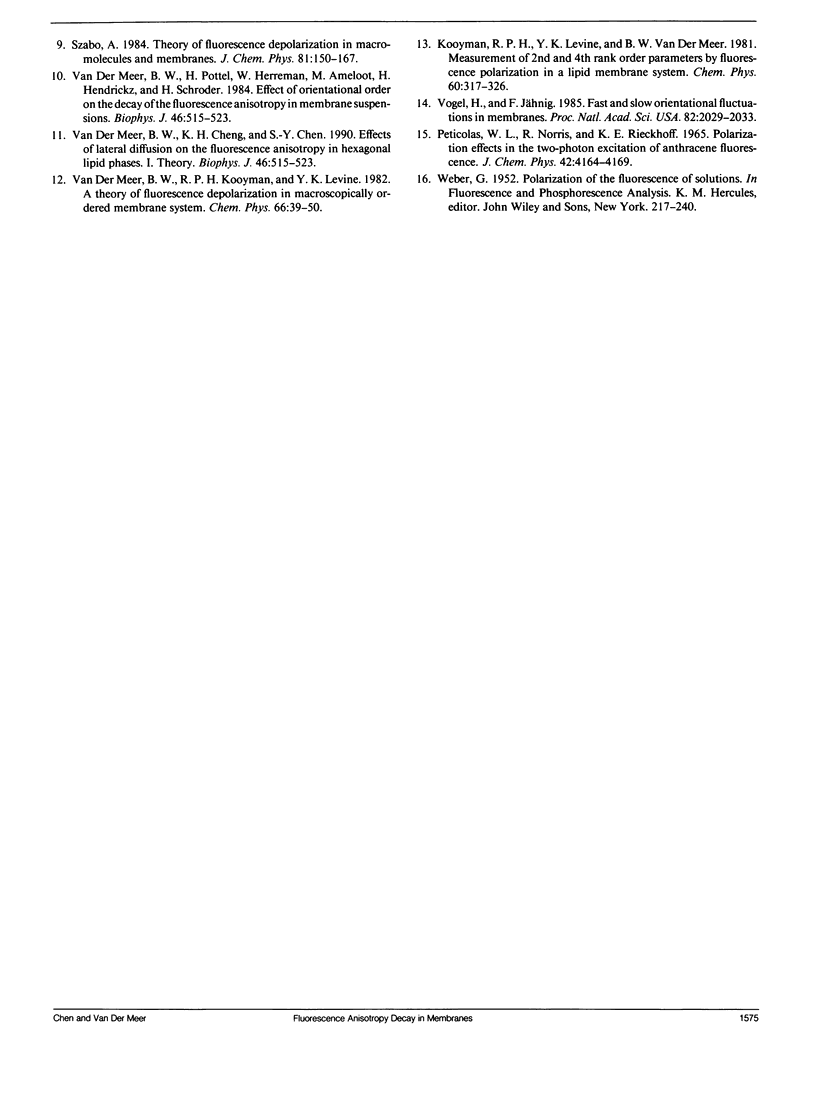
Selected References
These references are in PubMed. This may not be the complete list of references from this article.
- Denk W., Strickler J. H., Webb W. W. Two-photon laser scanning fluorescence microscopy. Science. 1990 Apr 6;248(4951):73–76. doi: 10.1126/science.2321027. [DOI] [PubMed] [Google Scholar]
- Vogel H., Jähnig F. Fast and slow orientational fluctuations in membranes. Proc Natl Acad Sci U S A. 1985 Apr;82(7):2029–2033. doi: 10.1073/pnas.82.7.2029. [DOI] [PMC free article] [PubMed] [Google Scholar]
- van der Meer W., Pottel H., Herreman W., Ameloot M., Hendrickx H., Schröder H. Effect of orientational order on the decay of the fluorescence anisotropy in membrane suspensions. A new approximate solution of the rotational diffusion equation. Biophys J. 1984 Oct;46(4):515–523. doi: 10.1016/S0006-3495(84)84049-7. [DOI] [PMC free article] [PubMed] [Google Scholar]


